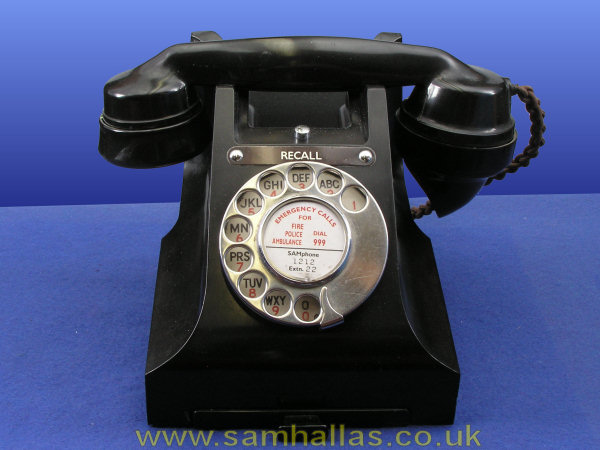

Sam Hallas' Website

Telephone No 330 is intended for private branch exchange working. It has a single press button which connects an earth to the telephone loop. The button is labelled 'Recall' and the case is drilled with a hole for the button and two smaller holes to mount the 'Recall' label.
Inside we can see how the push switch mechanism is mounted on the two tapped pillars seen earlier. The label is held by the chrome buttons seen on the outside which are fixed by the slotted nuts on the inside. The press button plunger is held in place with a washer fixed by an 8BA screw.
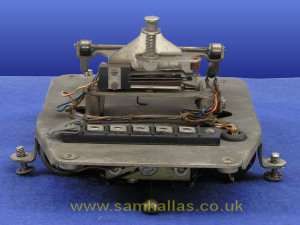


Telephone No 312 is intended for use on Shared Service installations (party lines). It has a similar external appearance to the 330, but the label reads 'Call Exchange'. I took the label off for safe keeping and now sadly can't find it! Inside the press button assembly also supports a metal rectifier, Rectifier Element No 1/12A. (Fig 21) This is to ensure that the correct calling equipment is seized at the exchange when the 'Call Exchange' button is pressed. The circuit diagram also shows a thermistor and it's tucked away under the platform at the back. (Fig 22). Its purpose is to make the bell insensitive to short pulses such as might occur when the other party on the shared service line was dialling. It has a high initial resistance. When the phone is rung by the exchange the thermistor warms and its resistance drops sufficiently to allow the bell to ring. The cradle switch has a changeover contact instead of one of the break contacts. It disconnects the bell when the phone is off-hook.
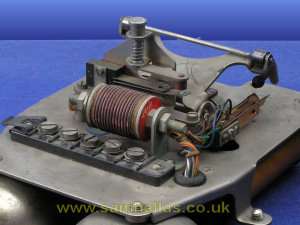
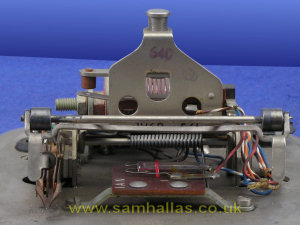
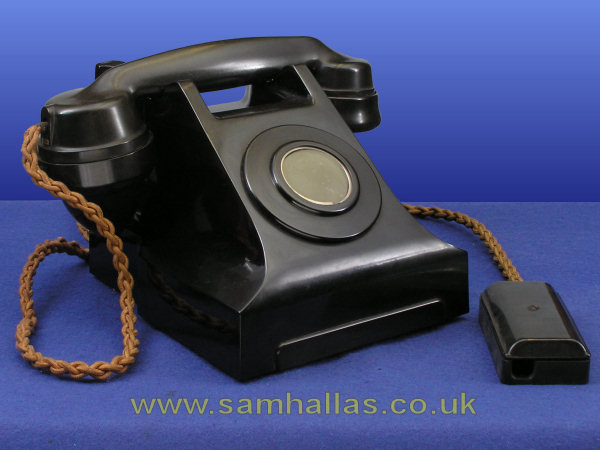
Although the telephone is identical to the Post Office model, Plessey used their own part numbers for sale to outside parties. This telephone found service in the railway industry.
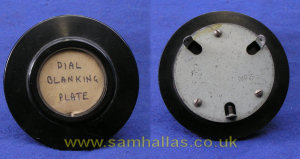
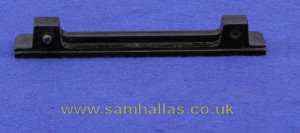
Without the need for a dial the space at the front of the case is filled by a blanking plate, Dial Dummy No 3. The terminals where the dial break springs would connect are shorted together inside as described on the diagram. The space where the drawer would be is similarly filled with a blanking plate.
Despite the Post Office's initial scepticism, the one-piece 300 Series telephone became standard issue for over twenty years. Many remained in service long after the introduction of the 700 series in 1959.
The 300 series telephone proved robust and reliable and was sufficiently flexible in its many variations to meet a large number of business and domestic needs. It has ingrained itself into the nation's memory such that this is the model people think of when the phrase 'old telephone' is spoken.
 Previous
Project Index
Previous
Project Index